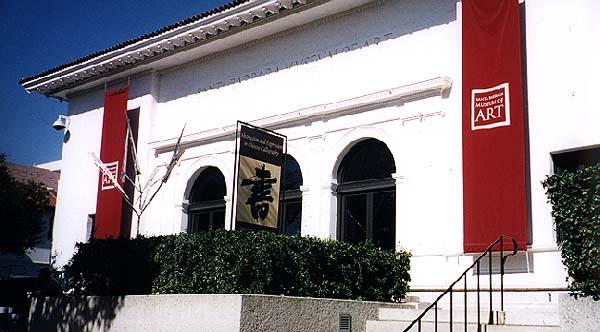The Santa Barbara Museum of Art aims to connect both residents and visitors to the exciting world of art through its permanent collections and special exhibitions. Each year, the museum’s professionals work hard to create engaging and exciting exhibitions highlighting different regions, styles, time periods, and artists. One of the most recent exhibitions at the museum looked at the intriguing work of Laszlo Moholy-Nagy. While many exhibitions about Moholy-Nagy’s work emphasize his use of technology, the Santa Barbara Museum of Art chose to look at underappreciated work with traditional paint media. In the coming months, the museum plans to open three exhibitions, each with a distinctive focus:
Looking In, Looking Out: Latin American Photography
Starting in late October and continuing until March, Looking In, Looking Out: Latin American Photography will explore the diverse political and culture landscape of Central and South America. The exhibition will look at the work of both Latin Americans and artists who have chosen to relocate there permanently. These two populations often create an interesting dialogue with the subjects that they choose for their photographs. The exhibition, which is organized geographically, will examine how the spirit of the different countries in the region shine through.
The Latin American photography exhibition will highlight promising artists from Cuba, Guatemala, Mexico, Colombia, Brazil, and other countries. The pieces chosen from the museum’s permanent collection speak to the connected — yet distinct — history of each nation and provide a lens to look at both the present and future of Latin America. The exhibition also looks at the intimate relationship between photographers and their homelands in an effort to challenge visitors to think about how people use photography to celebrate and criticize a subject that they love. For example, photographers such as Raul Corrales and Alberto Korda documented the Cuban revolution by capturing both the magnitude of the upheaval and the inherent humanity of the act.
Among the highlights of the exhibition, Cuban exile Mario Algaze looks at how his lost culture is mirrored in other societies, and Eniac Martinez examines the plight of Mixtec natives living in Oaxaca, Mexico. Moreover, Luis Gonzalez Palma paints by hand on traditional gelatin silver prints with black and sepia tones to problematize typical characterizations of native Guatemalans.
Geometry of the Absurd: Recent Paintings by Peter Halley
Peter Halley paints in geometric forms that serve as a metaphor for a wide range of modern institutions, from prisons to electrical conduit systems. His works make use of striking colors and basic shapes crafted from odd media, such as Day-Glo acrylics and Roll-a-Tex. Some art critics have looked at his use of geometry and bright colors to draw comparisons with the dawning age of information technology. The paintings can be interpreted as everything from a computer mainframe to a biological cell.
The Santa Barbara Museum of Art show will serve as Halley’s first solo show ever in the Western United States. The exhibition is comprised of eight iconic works produced over the last eight years and its title, Geometry of the Absurd, derives from the common farce of a closed loop cleverly disguised as an open system. Halley sees this farce playing out in modern society in several different ways and hopes to draw each viewer’s attention to societal structures that appear open on the outside, but actually represent a closed, self-contained cell. All the paintings chosen for this exhibition have a double-stack composition that consists of two cells placed on top of one another. No other exhibition has explored this motif, which has become common in his work in the post-millennial period.
Geometry of the Absurd opens in early November and runs through the third week of February.
Interventions: Cayetano Ferrer
A site-specific installation, Interventions is Cayetano Ferrer’s exploration of “object prosthetics,” a term that he uses to describe the reconstruction of broken remains through multiple methods. Ferrer, who has worked extensively on this theme throughout his career, will open Intervention in Santa Barbara in November. The exhibition will be on display until March.
As an artist, Ferrer explores the idea of architectural fragments. He views pieces of broken architecture as both objects and ideas. His project, Composite, used PVC that was digitally printed to fill in pieces of marble or other types of stone to create novel sculptures. The pieces of PVC fill in for what people might consider “missing,” yet audiences are left wondering whether the additions represent what was originally there or are purely born out of artistic speculation. His works encourage audiences to think about what might have happened in the past and how that aligns with a reinvented present. To that end, the work is part fantasy and largely elegy.
Visitors will be able to see Interventions in the historic Ludington Court, the oldest part of the museum, which is traditionally dedicated to antiquities from Ancient Greece and Rome. Since these sculptures will be moved off-site for renovation, Ferrer decided to incorporate the classical fragments from the museum’s storage into his exhibition. The objects integrate meaningfully with his own work, such as Remnant Recomposition, which was created from pieces of casino carpets.
